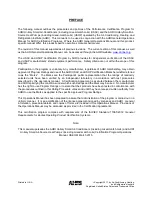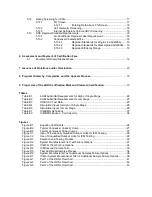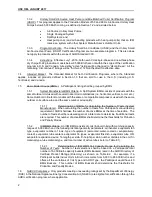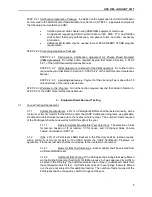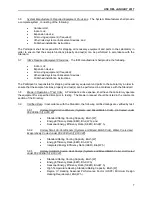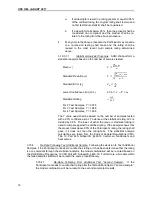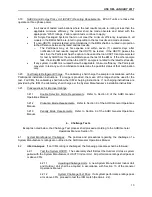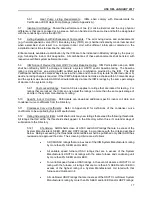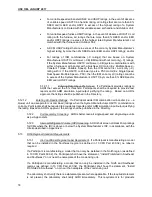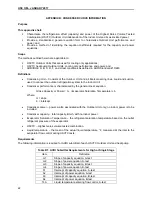
USE OM - JANURY 2017
8
3.10
Tests, Air-Conditioning (Systems and Mix-Matched Coils)
. All Unitary Air-Conditioning equipment
shall
be tested with the DOE “A” and “B” cooling tests as described in the Standard. Standard Rating tests
shall be conducted using the nameplate rated voltage and frequency specified in the Standard. For dual
nameplate voltage ratings (other than NAECA equipment), tests shall be conducted at 230V.
3.11
Tests, Heat Pumps (Systems and Mix-Matched Coils)
. All Air Source Unitary Heat Pump
equipment shall
be tested with the DOE “A” and “B” cooling tests, High and Low Temperature Heating, and
Frost Accumulation tests as described in the Standard. Standard Rating tests shall be conducted using the
nameplate rated voltage and frequency specified in the Standard. For dual nameplate voltage ratings (other
than NAECA equipment), tests shall be conducted at 230V.
3.12
EER
A
Test
. EER
A
is calculated from the DOE “A” test conditions by dividing the capacity by the
total system power. The calculated EER
A
shall be within 95% of the rated value. For multi-stage systems,
the highest rated capacity is used to determine EER
A
. EER
A
ratings shall be given for all Single Packaged
Systems and all combinations of Split Systems which the manufacturer intends to be used together.
3.13
IEER Test
. The calculated IEER shall be within 90% of the rated value. IEER ratings shall be
given for all Water-Cooled and Evaporatively Cooled Unitary Small Air-Conditioners.
3.14
Default Factors
– Systems
. At the completion
of DOE “A” and “B” tests, the Laboratory calculates
the SEER using the Cyclic-Degradation Coefficient (C
D
) default factor 0.25 even if the sample is certified
with a lower C
D
, not less than zero.
For heat pumps, at the completion of heating mode and frost accumulation tests, the Laboratory calculates
the HSPF with C
D
default factor 0.25.
3.15
D
OE “C” and “D” Tests
. If the calculated SEER is less than 95% of the certified SEER, the sample
may proceed through the DOE “C” and “D” tests at the Participant’s option and expense to obtain a tested
C
D
value. The tested C
D
value shall be lower than the default C
D
for it to be used to calculate SEER.
Even if the requirements are met using a default C
D
value of 0.25, the Participant
may opt for “C” and “D”
tests to be performed at his expense. If the tested C
D
is higher than the default value, the default value is
to be used to calculate SEER and HSPF.
AH
RI may require, at the expense of the Program, “C” and “D” tests to be performed on systems to assure
sufficient qualified condensing units for ICM tests.
3.16
High Temperature Heating Cyclic Test
. For heat pumps whose calculated HSPF is less than 95%
of the certified HSPF, the model may, at the Participant
’s option and expense, undergo High Temperature
Heating Cyclic Test to obtain a tested C
D
value. The tested C
D
value shall be lower than the default C
D
for
it to be used to calculate HSPF.
Even if the requirements are met using a default C
D
value of 0.25, the Participant may, at his expense, opt
to perform the High Temperature Heating Cyclic Test.
AHRI may require, at the expense of the Program, the High Temperature Heating Cyclic Test to be
performed on systems to assure sufficient qualified condensing units for ICM tests.
3.17
Outdoor Unit Qualification for ICM Testing:
3.17.1
Definitions
:
3.17.1.1
Qualified Unit
. An Outdoor Unit that is provided from a certified system
that passes all certified values.
3.17.1.2
Unqualified Unit.
An Outdoor Unit that does not pass all certified
values.

